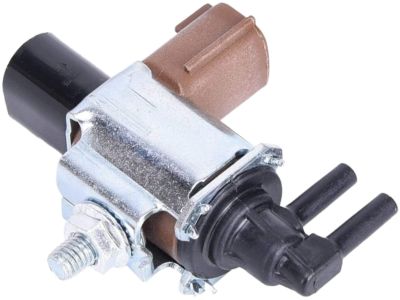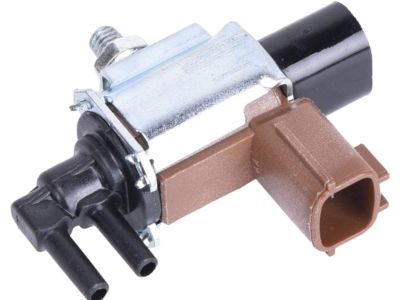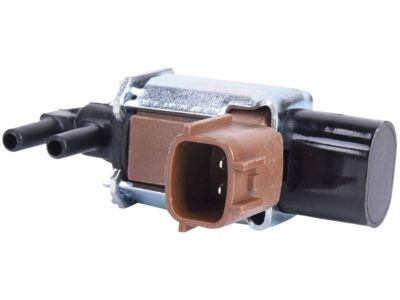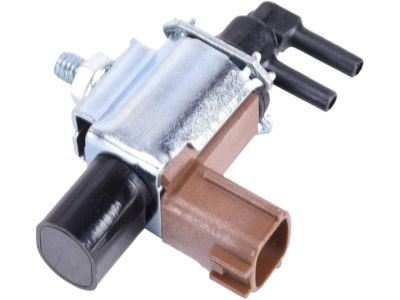×
- Live Chat
- 1-888-726-6993

My Garage
My Account
My Cart
Additional information needed to verify part fitment
My Vehicle: 2002 Nissan Pathfinder
Change VehicleThe vehicle options this part fits:
- Production Date: 08/2000-03/2001
- Fitting Vehicle Options: *VQ35DE. AT, VQ35DE. AT
Nissan 14956-35U10 Valve Assembly-SOLENOID
1995-2002 Nissan 1495635U10

- Part DescriptionSolenoid Valve Assy
- MITHUBISHI
- Lookup Code14956VA
- ManufacturerNissan
2002 Nissan Pathfinder
The vehicle options this part fits:
- Production Date: 08/2000-03/2001
- Fitting Vehicle Options: *VQ35DE. AT, VQ35DE. AT
$87.18 MSRP: $116.23 1
You Save: $29.05 (25%)
Ships in 1-3 Business Days
Product Specifications
| Brand | Genuine Nissan |
| Lookup Code | 14956VA |
| Manufacturer Part Number | 14956-35U10 |
| Part Description | Solenoid Valve Assy |
| Item Dimensions | 3.1 x 2.6 x 1.6 inches |
| Item Weight | 1.00 Pounds |
| Condition | New |
| Fitment Type | Direct Replacement |
| Manufacturer | Nissan |
| SKU | 14956-35U10 |
| Warranty | This genuine Nissan part is guaranteed by Nissan's factory warranty. |
| Shipping & Return | Shipping Policy Return Policy |
Warning: California’s Proposition 65
Customer Questions & Answers
- Q:Will this part fit my car? Posted by NissanPartsDeal Specialist
- A:You can Select Your Vehicle to check if 14956-35U10 fits your vehicle.Posted by NissanPartsDeal Specialist
- Q:How does the Exhaust Gas Recirculation (EGR) system,EGR Vacuum Solenoid and EGR Valve work and how to inspect and replace on Nissan Pathfinder? Posted by Customer
- A:Four-cylinder and 3.3L V6 models are equipped with an Exhaust Gas Recirculation (EGR) system designed to reduce NOx emissions by recirculating a portion of exhaust gases into the intake manifold. This mixture lowers combustion temperatures, decreasing the formation of NOx compounds. The EGR system includes components such as the EGR valve, EGR control solenoid valve, EGR temperature sensor, and EGR control backpressure transducer valve. The PCM controls the system, operating the EGR control solenoid using vacuum signals. The vacuum system utilizes a tap in the air intake system, while the ported vacuum control system uses a tap in the throttle body exposed to manifold vacuum during acceleration. The backpressure transducer valve monitors exhaust backpressure, aiding EGR vacuum signal control, and the EGR temperature sensor informs the PCM of temperature changes in the EGR passage. To ensure proper system function, check hoses, connections, and inspect for damage, cracks, or leaks. To test the EGR system, bring the engine to operating temperature, allowing it to idle, then open and close the throttle to observe EGR valve stem movement; movement indicates proper system function. If the stem does not move, check the vacuum signal and connections. Component checks include testing the EGR valve's diaphragm movement, vacuum retention, and rough idling with the valve open; clogged passages may necessitate cleaning. Additionally, inspect the EGR control solenoid for vacuum signals, voltage, and operation, replacing it if necessary. The EGR control backpressure transducer valve should leak when subjected to vacuum and stop when pressure exceeds 0.145 psi. Lastly, the EGR temperature sensor can be tested by submerging its tip in hot water and monitoring resistance changes. Resistance should decrease as temperature rises. Component replacement involves removing and cleaning the EGR valve and mounting surfaces, removing deposits, and ensuring proper installation. For the EGR control solenoid, unplug electrical connectors, detach vacuum hoses, and remove the solenoid before reinstalling it. For the EGR temperature sensor, disconnect the electrical connector and unscrew the sensor before applying anti-seize to the threads and reinstalling it.Posted by NissanPartsDeal Specialist
- Q:What is the location and common problem of the EGR valve on Nissan Pathfinder? Posted by Customer
- A:The EGR valve is usually located on the intake manifold. Most of the time when a problem develops in this emissions system, it's due to a stuck or defective EGR valve. With the engine cold, to prevent burns, push on the EGR valve diaphragm. Using moderate pressure, you should be able to push the diaphragm up into the housing. On four-cylinder engines you'll probably have to remove the air filter housing for access to the EGR valve. If the diaphragm doesn't move or is hard to move, replace the EGR valve with a new one. If in doubt about the condition of the valve, compare the free movement of your EGR valve with a new valve.Posted by NissanPartsDeal Specialist
If you have any questions about this product, please don't hesitate to ask us. We will be happy to help you!
Why choose Nissan Parts Deal
- Dedicated Service
Your complete satisfaction is our #1 goal
- Lowest Prices
Best deals on genuine OE parts from dealerships
- Fast Delivery
Orders are processed and delivered promptly



